A List of The 41 Worst Fast Fashion Brands To Avoid (2024)
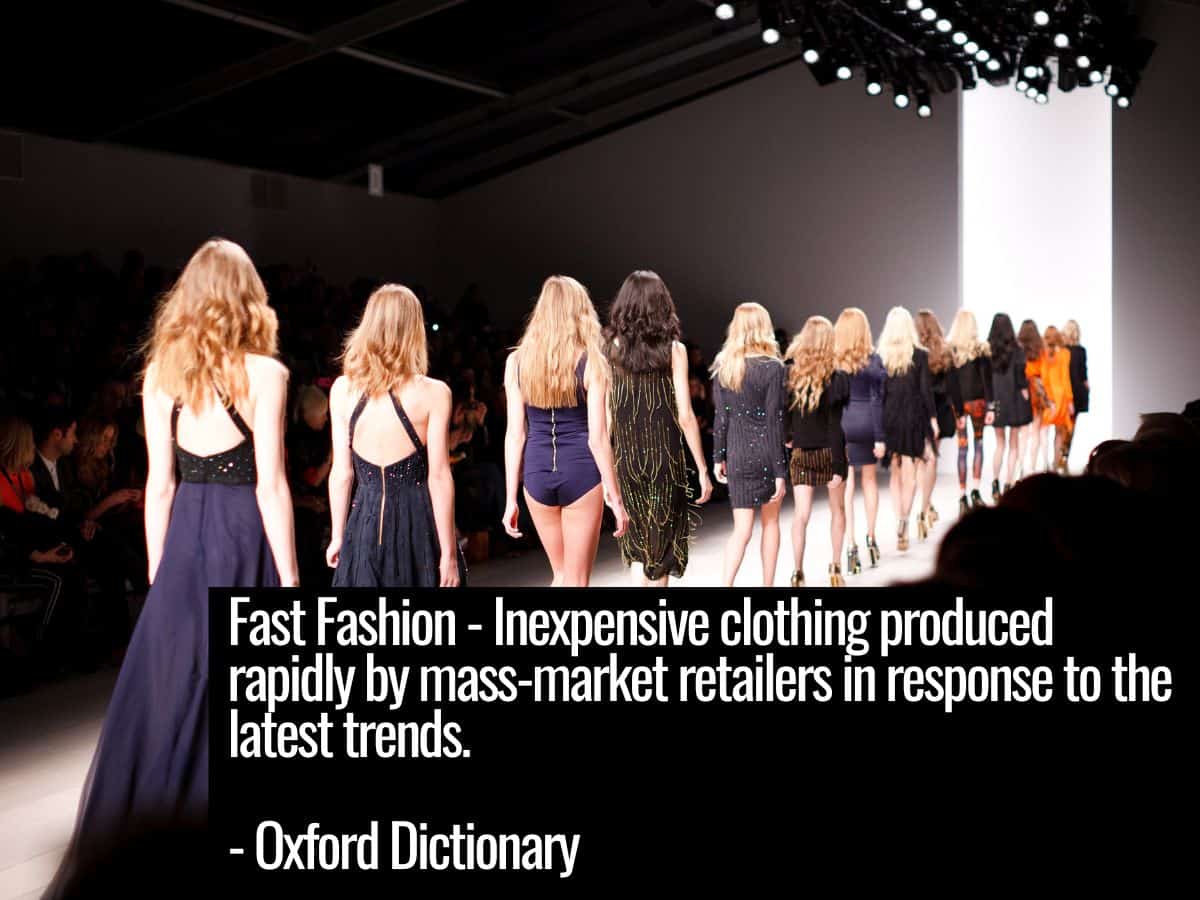
Fast Fashion refers to cheap clothing rapidly produced by mass-market retailers in response to current trends. The trends could be from the catwalk or from what a celebrity is pictured wearing.
Signs of Fast Fashion Brands
The common signs that a brand practices fast fashion include:
- Short turnaround time of clothes on the catwalk to the shelves
- Thousands of styles focusing on the latest trends
- Clothing in limited quantity
- Clothing made of cheap material
- Cheap labor from offshore manufacturers
As of 2024, some of the biggest fast fashion brands are in North America and Asia. Here are a few of the leading companies based on reports of their sales revenue:
- Zara – €19.58 billion
- H&M Group – $22.25 billion
- UNIQLO – $8.55 billion
According to Business Wire, the fast fashion market is expected to grow to $133.43 billion. But we can help change that by choosing to avoid them. Here are the most toxic clothing brands.
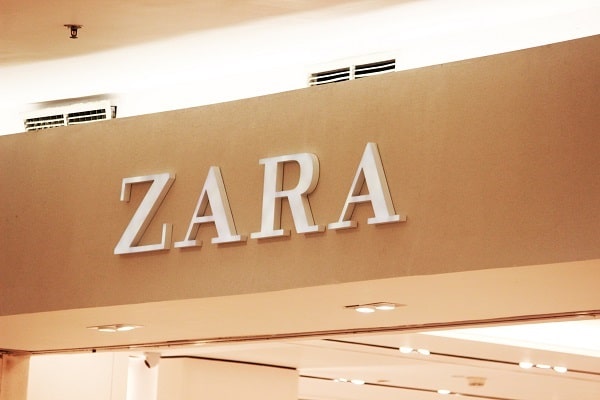
The Biggest and Worst Fast Fashion Brands To Avoid in 2024
1. Zara
Zara tops our list of worst fast fashion brands. Their designers put out 12,000 new designs per year. It’s been reported that they have a design-to-retail style of about five weeks.
Most reputable companies take six months instead. To top off Zara’s reputation as one of the worst fast fashion brands, their Brazilian factories are known for slavelike conditions.
Despite all of that, they’re unfortunately the most googled brand in the world. While Zara plans to only use sustainable materials by 2025, many are skeptical of its green initiatives.
The company hasn’t appeared to make any pledges to slow down factory production. If you’re interested in reading, they’ve also recently published a sustainability manifesto.
Recently it was reported that Zara has started creating clothing from captured carbon emissions. Critics argue that the new line is just more greenwashing because the brand is still encouraging a culture of overconsumption of clothes that end up as waste in landfills.
Being one of the biggest fast fashion brands in the world, everyone choosing to avoid this brand until they change would make a huge impact on the environment.
2. H&M (Hennes and Mauritz)
H&M is the second-largest clothing retailer with 3,500 stores and is considered one of fashion’s biggest polluters. Their staff is underpaid for their pricing, and they have been known to copy higher-end fashions.
H&M has also been accused of greenwashing with window displays saying “climate crusader” and “eco-warrior.” The company’s foundation recently announced a 100 million dollar investment to get consumers to recycle clothes like they recycle Coke cans.
But H&M is still receiving criticism for making vague sustainability claims. They’re currently dealing with a lawsuit over their conscious choice clothing line, which the plaintiffs are claiming they falsely market as sustainable.
The H&M Greenwashing Scandal: Has Business Learned the Lesson?
3. Shein
Shein was recently named the most popular brand in the world. They add thousands of styles to their website every day.
They’re the most googled brand, and one of the biggest contributors to the overconsumption of clothing, adding to the waste on our planet.
Shein has faced major issues with copyright infringement. The company has stolen designs directly from higher-end clothing companies, using the exact same images those companies use to promote them. One news report went so far as to say indie brands are at war with Shein.
The company has also sold some offensive items, such as a Buddhist swastika necklace and a phone case with a black person outlined in chalk. Lastly, Shein doesn’t disclose any information about the work conditions at their factories, despite being accused of child labor.
- Shein Crowned’ Most Manipulative’ Fast-Fashion Website: Report
- ThredUp picks a fight with fast fashion giant Shein
- New Coalition Wants to ‘Shut Down Shein’
4. Uniqlo
Uniqlo is a Japanese retailer that’s had multiple labor rights violations from one of its Chinese suppliers. As of 2016, they’ve received complaints that their workers were being forced to work excessive overtime for low pay rates under dangerous conditions.
While the company dismisses the idea that they’re fast fashion, critics still believe they need to do more. The company should list all their suppliers or provide more proof of paying a living wage.
But recently, they signed on to the Bangladesh Accord. It is an agreement to ensure safety for Bangladesh workers by not working with factories that don’t provide safe work conditions.
5. Stradivarius
The sister brand of Zara, Stradivarius, has 900 stores worldwide and was bought out by Inditex in 1999.
They’ve had repeated accusations of poor working conditions and low wages.
6. Mango
In 2013, a commercial building in Bangladesh collapsed, leading to the deaths of over 1,000 people and injuries to around 2,400.
One of Mango’s factories was destroyed in the collapse. Of 29 brands that had manufacturing in the building, only 9 offered compensation to victims, and Mango was not one of them.
Mango needs to disclose more information about its animal welfare and labor practices.
7. Topshop
Topshop is working on adding more eco-friendly materials to make its products. But the company provides little information about reducing their greenhouse gases or hazardous chemicals.
At one time, the company was selling Joni skinny jeans every 10 seconds. It’s doubtful that with that much demand, the company has taken much time to produce its clothing sustainably.
Topshop needs to provide more information about whether they pay workers an adequate living wage.
8. Pretty Little Thing
Pretty Little Thing is owned by Boohoo and is a part of the rise of ultra-fast fashion. Like Shein, they’re aimed at a younger audience.
They leveraged social media to grow into the fast fashion empire it is today. They are accused of relabeling cheaper brands like Fruit of the Loom and reselling them for twice the price.
One customer complained she found a fruit of the loom label on a pair of leggings that were marked as Pretty Little Thing.
Workers also spoke out to labor advocates about BooHoo having them continue to work in their distribution centers during the peak of the pandemic.
An independent audit by Boohoo found that they did put profit over the safety of their workers. Though Boohoo pushes back on the notion they’re a throwaway fashion brand.
US Fast Fashion Brands
9. Nike
It’s widely known that Nike had sweatshops and paid their workers incredibly low wages. While those conditions have improved somewhat since the 90s, in 2017, labor rights experts were blocked from independently monitoring Nike’s supplier factories.
For this reason, it’d be best to avoid buying from them until they do much more to ensure their workers are being treated fairly.
Related: Is Nike Fast Fashion?
10. Forever 21
Forever 21 uses almost exclusively synthetic fabrics, which are bad for the environment. They also did not sign the Bangladesh accord, which was a guarantee to ensure garment workers’ safety and rights.
They’ve been sued and pursued by the Department of Labor multiple times for worker violations in the US and abroad, including in Los Angeles. In addition, they have been sued by garment workers who had to work six days a week and 12 hours a day for less than minimum wage.
Recently, Forever 21 filed for bankruptcy. It’s considered a small victory in the fight against fast fashion.
It’s believed that changing consumer tastes towards more sustainable fashion was a contributing factor to the decline in sales.
11. Urban Outfitters
Urban Outfitters is targeted primarily at younger adults with clothing, footwear, beauty products, activewear, and equipment. Their staff suggests they are underpaid and are asked to work weekends for free.
Urban Outfitters claims to not use child or slave labor but has provided little evidence to support that and refuses to share information about their supply chain.
A news source recently reported that Urban Outfitters uses LA sweatshop labor to make their clothes. Another news source reported that Urban Outfitters stopped paying their factories by using Covid-19 as an excuse.
12. Victoria’s Secret
Victoria’s Secret is a designer of women’s clothing and lingerie. They have a long list of allegations, including formaldehyde lawsuits, child labor, and sexual harassment towards their models.
According to a Business Insider article, Victoria’s Secret is completely on the bandwagon for fast fashion, expecting their stores to be restocked with new designs twice a week.
In 2020, Victoria’s Secret dumped hundreds of bras in the dumpster, which will, in all likelihood, add to our landfill waste.
13. GUESS
GUESS has worker rights issues going back to the 1980s. They were among the first businesses to make headlines for the use of sweatshop labor in the 1980s.
14. GAP
GAP is a huge retailer with over 3,000 stores intentionally, specializing in men’s, women’s, and kids’ clothing as well as footwear.
They have many problems, including unpaid labor at both their retail stores and factories, as well as forcing abortions on their factory workers.
In 2013, employees at one of their factories were reportedly working over 100 hours per week.
15. Hollister
Hollister is a clothing company owned by Abercrombie & Fitch. As popular and financially successful as they are, critics say that little of their finances goes towards eliminating hazardous chemicals from their products.
They’re also criticized for not taking adequate steps to ensure their workers are paid a living wage.
Additionally, there have been accusations that Hollister is a toxic workplace.
16. American Eagle
American Eagle has 1000 stores worldwide and is known for selling on-trend jeans and casual wear to young people. They’ve had a very poor history of ensuring good labor conditions.
There was an unsafe sandblasting incident in 2015 and also a leaked video in 2011 of workers being treated poorly.
Additionally, they’ve shown no evidence that they’re moving towards eliminating hazardous chemicals in their supply chain. But in 2019, the company announced a 20-year action plan for sustainable manufacturing.
17. HOT TOPIC
Hot Topic is well known for selling clothes to teens and young adults that are into pop culture. They are also known for underpaying their employees while selling poor quality.
18. Nasty Gal
Nasty Gal thrives on influencer collaborations. It’s important to hold influencers accountable for fast fashion too.
Unfortunately, Nasty Gal reveals little about environmental initiatives on their website.
They don’t appear to use any eco-friendly materials, and they don’t share any information about their supply chain policies.
19. Anthropologie
Anthropologie is known for selling adventure-inspired, elegant collections. Unfortunately, this company doesn’t appear to avoid hazardous chemicals in their clothing.
Additionally, their supply chain has no certifications for labor standards that ensure worker safety and living wages.
20. Men’s Warehouse
Men’s Warehouse does not provide information on how their products are impacting the environment.
They also use leather, wool, and down in making their clothing and do not state where they source their materials.
But Men’s Warehouse does have a sustainability clothing line.
UK Fast Fashion Brands
21. Missguided
Missguided is a British brand that appeals to women 16-35 of all shapes and sizes. They also have a line called Mennace, aimed at men.
The company has been known to illegally use fur from cats, dogs, and rabbits for their shoe lines. Half of Missguided’s clothing line is made of non-recycled plastics.
In 2019, they sold bikinis for one pound under the appearance of trying to empower women, but it highlighted the issue of throwaway culture.
22. Primark
Primark is a fast fashion company based in Ireland and headquartered in Dublin. Back in 2014, “SOS,” meaning “Sink or Swim,” was found stitched into labels within clothing produced by the company.
Primark dismissed the issue as a hoax, but another note was produced in the same year. It indicated the company’s factory workers were overworked, being assigned 15 hours per day.
As far as sustainability, Primark has invested in using more eco-friendly materials such as sustainable cotton.
But critics still challenge Primark to do more to minimize its carbon footprint.
23. Peacocks
Peacocks is a British group with 600 stores that used to sell home goods but made the transition to “value fashion” and sells poor quality clothing with a low-paid staff.
If that’s not bad enough, they also sold a perfect “inflatable woman” who was designed to be “sexy” and “nag-free.”
24. ASOS
ASOS, supposedly standing for “As Seen On Screen,” is a British online-only retailer selling more than 850 brands, including their own.
They’re a another wasteful fashion company popular with Gen-Z.
ASOS has added as many as 7,000 new styles per week. The company faced scrutiny in 2019 after posting a picture of one of its models wearing an ill-fitting dress held on by clips.
Many of their social media followers criticized the misleading portrayal of the item.
It raised the issue of how often clothing produced by big clothing brands doesn’t fit the way they’re advertised. It’s another example of the poor quality of fast fashion.
25. New Look
New Look is a UK brand with hundreds of stores that sell clothing for men, women, and teens.
Some of the wasteful fashion traits this company reflects include regular new arrivals and on-trend styles.
26. Wish
Wish is similar to Shein in that they offer what look like higher-end products only to actually ship lower-quality results.
Overall, they provide no information about sustainability or ethical practices.
27. Fashion Nova
Fashion Nova is one of the fastest-growing women’s clothing lines found on the internet. Nonetheless, they offer no information about their environmental policies, and their supply chain is not certified by labor standards.
It was discovered in 2019 that Fashion Nova’s Los Angeles workers were underpaid.
28. Wallis
Wallis is owned by Boohoo and thus also offers on-trend styles and regular new arrivals, which add to the problem of waste on our planet.
Additionally, they do not provide adequate information on their commitment to reducing greenhouse gas emissions.
29. Miss Selfridge
Miss Selfridge is a British fashion company that doesn’t appear to make any attempts to reduce its clothing manufacturing. The company also doesn’t provide much evidence of reducing its use of hazardous chemicals.
30. River Island
River Island doesn’t share much information about how its environmental policies help the planet.
They also use animal products such as leather and wool to make some of their products.
31. Oasis
Oasis sources its final stage of production in countries that have a risk of potential labor abuse. There’s also little evidence of living wages being provided to the workers.
The company was recently bought by fast fashion brand Boohoo.
32. Next
Similar to other brands on this list, Next doesn’t provide much evidence they are reducing their textile waste, nor does it provide much evidence of following water reduction initiatives.
Their supply chain has no certification of labor standards to ensure worker safety.
More Fashion Companies To Avoid
33. Dior
Dior is secretive about its supply chain and where its materials come from. Their final stage of production is done in countries that have a medium risk of labor abuse.
While they have their own restricted substances list, there’s little evidence of meaningful steps to eliminate hazardous chemicals from their clothing.
34. Massimo Dutti
Massimo Dutti is a Spanish-owned apparel company known for cheap clothes with 781 stores.
They are owned by the same Inditex company known to underpay employees, pay little regard to the environment, and churn out vast quantities of poor clothing.
35. Adidas
Adidas, known for activewear, clothes, and shoes, is the biggest manufacturer in Europe.
The company actually does well with labor conditions, but they are less sustainable, using products like wool, down, and leather to make their products.
But in 2021, they announced a new low carbon footprint sneaker.
36. Rip Curl
Rip Curl is known for making sportswear. Sadly, some of their products were made by forced labor in North Korea.
The country’s forced labor has been referred to as modern slavery. Rip Curl has since apologized and is working on making sure this mistake doesn’t happen again.
Rip Curl needs to use more eco-friendly materials and provide more evidence they’re reducing their carbon footprint.
37. Zaful
Zaful is a fashion company that’s based out of Hong Kong. They basically provide no information about any good they do for the environment or their supply chain.
38. Espirit
Critics say that Espirit is not taking enough steps to minimize its textile waste.
They don’t provide much information on packaging or their emissions across their supply chain.
In recent years, they’ve attempted to become more eco-friendly.
39. Benetton
Benetton was another company that also did not compensate its workers initially after the factory collapse in Bangladesh in 2013.
They neglected to offer any monetary support until two years later.
The brand gave money to the Dhaka factory collapse fund. Additionally, Benetton final stage of production is sourced from countries with an extreme risk of labor abuse.
40. Weekday
While Weekday is improving in using more eco-friendly materials in its fashion line, they still exhibit fast traits such as regular new arrivals and on-trend styles.
It’s a critical improvement that must happen to reduce the waste on our planet.
41. Pull&Bear
While they have set a target for reducing their greenhouse gas emissions, Pull&Bear don’t provide information about whether they’re on track to hit that mark.
The company did recently start a Join Life collection that’s more sustainable.
Overall, they don’t use as many eco-friendly materials to make their clothing.
Additionally, some of its final stage of production takes place in Spain, which is known to have some labor abuse.
Impact of Fast Fashion Brands: Oceans are polluted by plastic fibres and underpaid workers are being exploited.
UN Environment Programme
How to Avoid Fast Fashion Brands
The desire for new clothes and the latest trends is understandable. The pricing of some of the listed clothing companies can be very enticing too. Here’s how you can resist the urge to buy from them.
1. Don’t Buy Too Much
Simply buying less clothing, whether it’s low or high quality, can help put a dent in the fast industry by making it less profitable.
Buying fewer articles of clothing can potentially influence manufacturers to stop making so much.
2. Check for Quality
Take a moment and look at that shirt, dress, or pants you want to buy. Is the material thin?
A piece of clothing with very thin material will probably not last long. As a result, you’ll have to buy a new pair sooner rather than later.
You also shouldn’t be able to pull the seams apart to let light through. Pants that are meant to last should always feel heavier and stiff. The zippers should be made of metal instead of plastic.
In general, your clothes should feel fairly durable. If you don’t think the clothing will last, don’t buy it, no matter the price.
Only buy something if you think you’ll be able to wear it 30 times or more. Learn more about this in a New York Times article on How to Buy Clothes That Are Built to Last.
3. Look For Used
Buying used clothing reduces the clothing’s overall impact on the environment. It won’t be thrown away and become waste.
4. Do Your Research
Research brands ahead of time and know which ones produce ethically. Buying from brands that don’t make eco-friendly clothing and don’t treat people well only encourages them to keep doing that.
While the list we provided isn’t comprehensive, as you can see, many of today’s major companies produce an excessive amount of clothing.
There needs to be more concern for the workers, the environment, and intellectual property rights.
For the sake of the planet and human rights, we recommend you avoid them and choose sustainable alternatives.
Your clothes will last longer, and the planet will too. Make it your sustainable new year resolution to quit fast wardrobes once and for all.
Sustainable Clothing Brands Fighting Fast Fashion
In order to bring meaningful change to the fashion industry, we need to stop giving our business to these harmful clothing stores. Instead, support some of the best sustainable clothing brands. Here’s a list to get you started:
- Reformation – Sustainable clothing and accessories
- Pact – Organic cotton clothing
- People Tree – Fair trade clothing made with eco-friendly materials
- Ninety Percent – GOTS-certified organic cotton clothing
- Alternative Apparel – Casual comfortable eco-friendly clothes
Encourage your friends, family, and those you meet to stop shopping fast fashion. As more of us opt for sustainable clothes, we can help make the world a more eco-friendly place.
Helpful resources:
- 8 Slow Fashion Brands Helping To Save The Planet
- How To Have a Sustainable New Year’s Eve Party for 2022
- 12 Ways To Conserve Energy in 2022


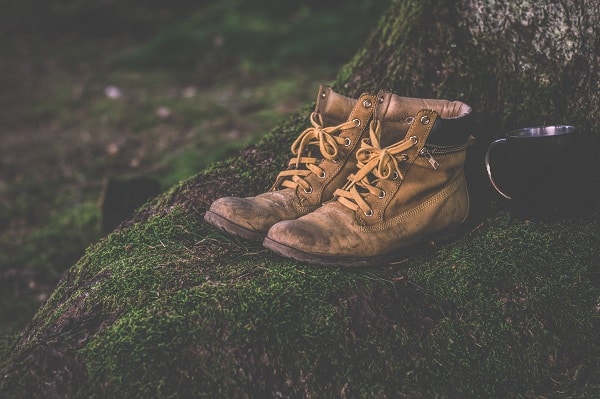

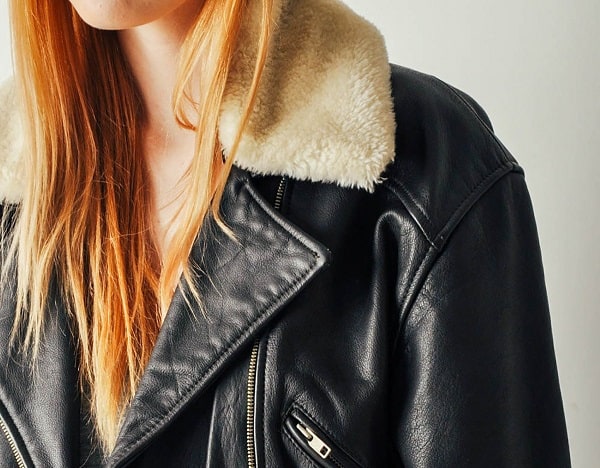
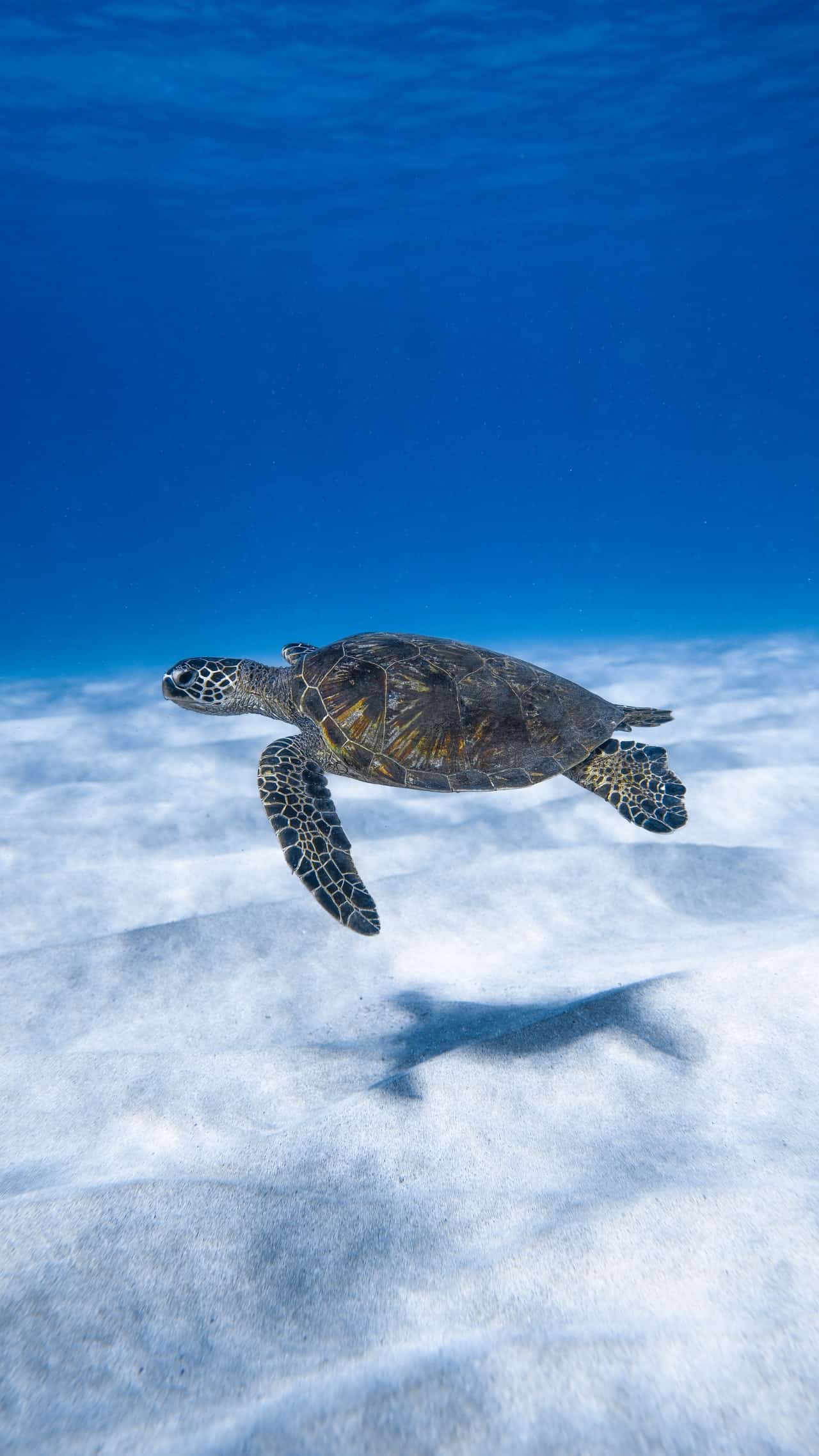
Thank you for the information. I will say that it is a bit harder to tell quality when buying products on-line. The question I have is about sites like Zulilly, NoraCora and sites like that. Do they fall in that fast fashion category?
This is basically a list of all the affordable clothing brands out there. So, what do you suggest people who cannot afford high end clothes and don’t want to wear used clothes (that’s disgusting! I can’t understand how people buy and wear used clothes/shoes) do?! While I might agree with some of the names, others are not so bad. For example, Mango, Massimo Dutti, Next have clothes of good quality. I had a jean jacket from Mango and a quilted jacket from Next that I wore for 10 years! I have owned a dress from Mango for 10+ years! Not all fast fashion clothing brands offer cheap quality. And if you buy investment pieces and take good care of them, you don’t have to buy clothes frequently. It’s really more about people splurging on clothes every week than the brands.
Lorene
I have seen articles such as this numerous times. At the end they suggest “sustainable” clothing sites to visit. I visited one and a pair of basic jeans – $300!! A shapeless cotton dress – $120!! Fast fashion may have its problems, but so do these other sites. You make no mention of where retailers such as Macy’s, Nordstroms, Penny’s, Saks, etc. purchase the majority of their clothing – from the same countries (India, Bangladesh, China, Taiwan, etc.) where fast fashion retailers get their wares, perhaps from some of the same factories. Most of fast fashion caters to teens, with limited cash from PT jobs or allowances, or 20 somethings who are not going to work in a high paying tech job. Without alternatives fashion would be drab, boring and only for those who could shop sustainable. Also, used clothing is not ncecessarily cheap. The RealReal anyone?